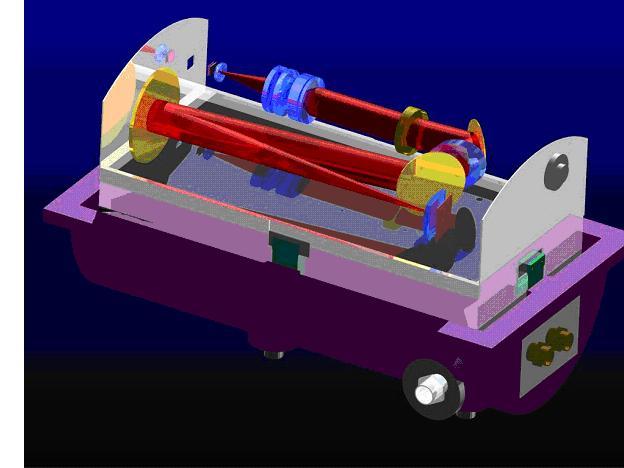|
|
Project 1640 - The Search for Extra-Solar Planets |
|
Project 1640 is a collaborative project between the astrophysics group at the American Museum of Natural History (AMNH) and the instrumentation group at the Institute of Astronomy, University of Cambridge ( IoA ) to build an Integral Field Spectrograph (IFS) for Exoplanetary Science.
The AMNH team lead by Ben Oppenheimer have already build the world's first diffraction-limited coronagraph, which is fully functional and being used in a long term survey of nearby stars. This project - the Lyot Project - has unprecedented sensitivity to detect faint objects next to nearby bright stars. The coronagraph takes advantage of the US Air Force's Advanced Electro-Optical System (AEOS) - a 941 actuator adaptive optics (AO) device installed on a 3.67m telescope on Haleakala, Maui. The Coronagraph and Integral Field Spectrograph are currently (July 2008) being commissioned on the Hale 5 metre telescope at the Mount Palomar Observatory, in California.
Why are we building an Integral Field Spectrograph? Although 99.9% of the light from the star is removed optically by the coronagraph, the residual light shows complex structure - a complicated and changing background against which the planets must be detected. The atmospheric speckles are controlled by the AO system. It has been noted that speckles introduced by the instrument have a definitive wavelength dependence, unlike that of real objects. By obtaining spectral information on the speckles an increase in sensitivity of 100 could be achieved with the coronograph.
The IoA Instrumentation Group has considerable expertise in the optical design of Integral Field Spectrographs and Infra-red detector systems.

Project 1640 links
-
Speckles
-
The Integral Field Spectrograph optical design
-
The Detector system
- The
Project 1640 development team
-
Ian Parry's's webpage
-
Dave King's's webpage
-
Ben Oppenheimer's webpage
-
Sasha Hinkley's webpage
David King king@ast.cam.ac.uk
Last modified:
08 July 2008

